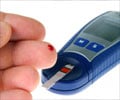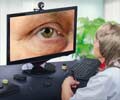Type 1 diabetes is the most common chronic childhood disease. The management of this serious medical condition includes regular fingerstick glucose
Type 1 diabetes is the most common chronic childhood disease. The management of this serious medical condition includes regular fingerstick glucose measurements, multiple daily injections of insulin, and frequent insulin dose adjustments. Because children spend a great deal of their time in school, school nurses often supervise medical decisions and diabetes care. Some researchers believe that the use of telecommunication technology may make diabetes care easier for some children. A new study soon to be published in the Journal of Pediatrics explores the effectiveness of telemedicine in helping school nurses and children manage diabetes care.
Dr. Roberto Izquierdo and colleagues from SUNY Upstate Medical University in Syracuse, NY, studied 41 children between the ages of 5 and 14 years with type 1 diabetes. All of the children received routine care, and 23 of the 41 children were also enrolled in a telemedicine intervention program. As a part of routine care, letters containing instructions for each child's diabetes care were sent to the school nurses, who also attended an annual diabetes education program. Additionally, all children visited the diabetes center at SUNY Medical University every three months, and parents, children, and school nurses communicated with the center via phone as needed. In addition to receiving regular care, the 23 children enrolled in the telemedicine intervention program attended video conferences with the school nurse and the diabetes center monthly to discuss treatment orders. Their glucose readings were sent to the center via the telemedicine unit, and the diabetes nurse practitioners at the center made adjustments to insulin treatments as needed.During the initial six month period of use, the telemedicine group experienced improved blood sugar control and fewer visits to the Emergency Department and/or hospitalizations due to their diabetes. The telemedicine program was well accepted by the participants, with more than 90% stating they would use the program again. According to Dr. Izquierdo, "Children in the telemedicine treatment group were more apt to feel better about their diabetes." He also notes that the children who used the telemedicine program were more likely to complete the prescribed diabetes care related tasks, which can lead to improved management of the disease. Dr. Izquierdo and his colleagues are hopeful that school telemedicine programs could improve diabetes care in the future.
Source-Eurekalert
THK














